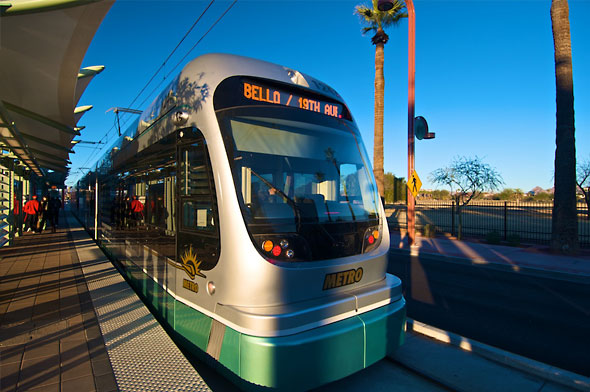 The following post was written by Michael Andersen of the Nieman Journalism Lab blog.
The following post was written by Michael Andersen of the Nieman Journalism Lab blog.
When Adam Klawonn quit his job at a shrinking major metropolitan newspaper in 2006, he did what so many other journalists have: launched an online news operation that looked a lot like a newspaper’s web site, only with less stuff.
On The Zonie Report (“A New Kind of News for Arizona”), he set out to cover growth, immigration, the environment. The big issues. “The traditional papers were going local, and they were pulling back their bureaus,” said Klawonn, now 30. “It seemed like it was just wide open.”
And from the start, he seemed to be doing everything right — learning enough PHP to slap together a sharp-looking Web site; shooting videos and producing podcasts; painstakingly tagging articles into a dozen geographic categories; looting his bank account for a freelance budget; hiring a New York Times stringer for what turned out to be award-winning environmental reporting.
 After two years, it was clear: The Zonie Report was — have you guessed, dear reader? — a complete commercial failure. Without a single town to target, advertisers shunned the site. And though Klawonn’s scattered readers gave him 20,000 pageviews a month, they passed on his offer of CafePress mugs and T-shirts.
After two years, it was clear: The Zonie Report was — have you guessed, dear reader? — a complete commercial failure. Without a single town to target, advertisers shunned the site. And though Klawonn’s scattered readers gave him 20,000 pageviews a month, they passed on his offer of CafePress mugs and T-shirts.
So last year, Klawonn started sketching out the plan that, this week, landed him a $95,000 Knight News Challenge grant: a news service devoted entirely to Phoenix’s six-month-old light rail system. Its working title is Daily Phoenix.
Plan B is narrower. Much narrower. Old idea: regional trend stories about migrant labor. New idea: opt-in text alerts about train delays. Old content: “In Prescott, a water war escalates.” New content: the details of every crime within a five-block radius of each rail stop.
 With his business partner, newly minted Arizona State MBA Aleksandra Chojnacka, Klawonn will offer businesses a chance to be included in twice-daily text messages to mobile subscribers. “It might be, ‘Two-for-one sandwiches!'” Klawonn said. “It might be, ‘Extended happy hour over here!'”
With his business partner, newly minted Arizona State MBA Aleksandra Chojnacka, Klawonn will offer businesses a chance to be included in twice-daily text messages to mobile subscribers. “It might be, ‘Two-for-one sandwiches!'” Klawonn said. “It might be, ‘Extended happy hour over here!'”
A print tabloid, conceived in part for advertisers still focused on physical objects, might include coverage of government actions that relate to rail transit.
Klawonn’s remains in a tight space: he figures his Plan B will cost $220,000 in its first year, far more than The Zonie Report ever has. He figures he has until spring to secure the next round of private grants or investments, and he’s confident that with his new idea, that’s possible. And he still believes in his first big idea, which he still hopes can become a sort of NewWest for the Southwest, or at least for Arizona. After all, believing in regional policy reporting has gotten him this far.
“The Zonie Report was a journalistic success and an economic revenue failure,” Klawonn said. “I just thought if I could hang in there in some way and prove that I’m committed to this field and that I’m interested in trying new things, that something was going to break my way.”
Reprint courtesy Nieman Journalism Lab, a project of the Nieman Foundation at Harvard University.



